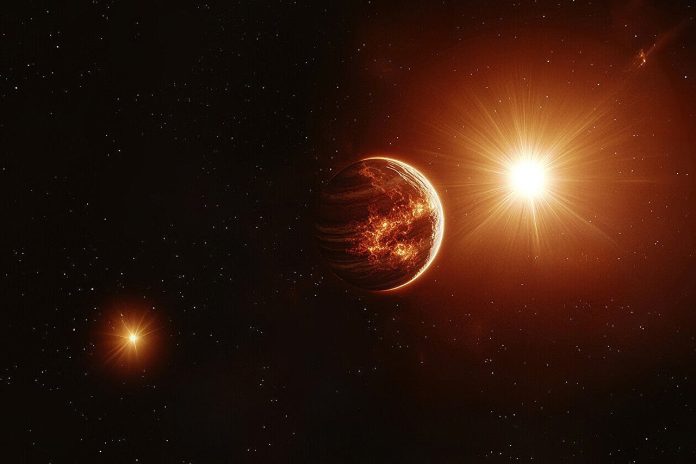
Yale astronomers may have uncovered how one of the universe’s rarest planetary pairs—double hot Jupiters—come to exist.
Their new study not only explains how these sizzling giants may form around twin stars, but also offers clues for where to find more of them.
Hot Jupiters are enormous planets, about the size of Jupiter or Saturn, that orbit extremely close to their host stars.
Because of their proximity, these planets reach blistering temperatures above 3,000°F and complete a full orbit in just a few Earth days—or even less.
The first hot Jupiter was discovered in 1995, and since then, they’ve captured astronomers’ imaginations. Still, they remain rare, found around only about 1% of stars.
Even rarer are double hot Jupiters—systems in which two stars orbit each other, and each star has its own hot Jupiter.
These systems are incredibly difficult to find, and until now, scientists haven’t been sure how they could form.
The new study, led by Yale assistant professor Malena Rice and her team, offers a compelling answer. The researchers suggest that a long-term gravitational process, called von Zeipel-Lidov-Kozai (ZLK) migration, can explain it.
In this process, the gravitational pull of a second star in a binary system slowly disturbs the orbits of planets around the primary star. Over time, this tug-of-war can cause a gas giant planet to move inward toward its star—eventually becoming a hot Jupiter.
What’s fascinating, Rice says, is that the same process can happen around both stars in a binary system. “The ZLK mechanism is like a dance,” she explains.
“One star influences the planets orbiting the other, causing them to change their paths and spiral inward. With the right conditions, both stars can end up with their own hot Jupiter.”
To test this idea, the team ran detailed computer simulations showing how binary stars and their planets might evolve over billions of years.
While such changes are impossible for humans to observe in real time, the simulations help scientists trace the hidden forces that shaped these systems.
First author Yurou Liu, an undergraduate at Yale, emphasized that hot Jupiters are especially interesting because they don’t fit the traditional model of planet formation, which suggests that giant planets should form far from their stars. “That’s what makes hot Jupiters so strange and exciting,” Liu said.
Based on their findings, the team also identified where astronomers might look next: hot Jupiters that already live in systems with a second star nearby.
These could be the best candidates for discovering double hot Jupiter systems—and unlocking more secrets of how planets move and evolve over time.
Source: Yale University.



